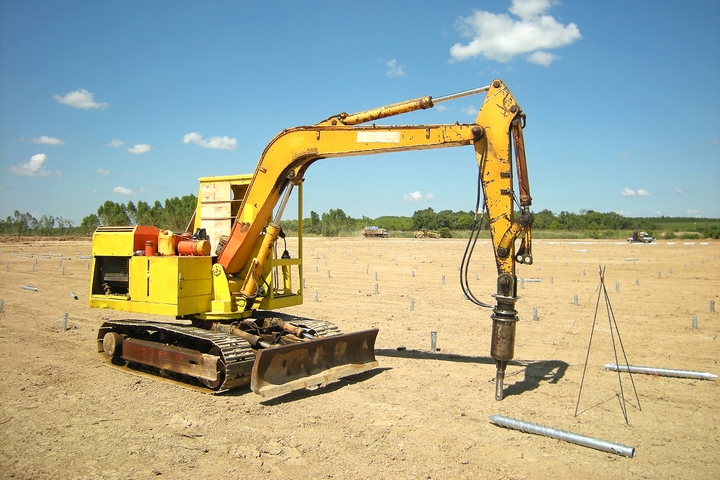Pile foundations are one of the methods used to ensure that structures have a sturdy foundation. This method is most often chosen when the soil is unstable, or when there is significant moisture and water present in the area directly below where the structure is being built. This one foundational method can be carried out in a variety of different ways to suit various environments and needs.
Here are eight popular piling methods in building construction:
Method #1: Driven piles

Using pile drivers and pile hammer equipment, precast piles are hammered (or driven, hence the name) deep into the ground. Driven piles offer the benefit of being made from steel, concrete, or wood. The method is also beneficial because of the way it compacts the soil during the hammering process. Some soils, like silt, do not compact as well as others, and in cases like that, this benefit is lost. Another benefit of driven piles is that it allows the pile to distribute the load of the superstructure through both weight bearing and friction.
One of the drawbacks of driven piles is that the hammering process can actually damage or compromise the strength of the pile. Pads are used to protect the hammer from hitting the pile directly as a measure to try to avoid damaging the piles. That said, the jarring blows can still cause damage, despite best efforts.
Method #2: Cast-in-place piles

Also called cast-in-situ or bored piling, this piling method requires the hole to be pre-dug and reinforced. The pile is manufactured out of concrete by pouring it directly into the hole. These are load bearing piles, and the do not distribute the load through friction like driven piles do.
These are beneficial because they don’t cause as severe vibrations and noise as driven piles, so they are much less invasive, especially in highly populated areas. Furthermore, they are more resistant to natural disasters like high winds, storms, and earthquakes.
Method #3: Driven and cast-in-place piles

A shell made of steel is driven into the ground, as a driven pile would be. Then, concrete is poured into the shell, making this method the best combination between the two previously mentioned piling methods.
The benefits of this method draw from both the benefits of driven and bored piles: it allows for load distribution through friction, it does compact the surrounding soil, and the pile doesn’t lose integrity from being hammered down, because it’s only the shell that is actually hammered in.
Method #4: Screw piles

Also known as helical pile foundations, these piles are made of steel and work kind of like driven piles. Instead of hammering the pile into place, though, these piles are screwed, which decreases noise pollution.
They are well-liked for the how easy they are to install and how minimally invasive they are on the environment compared to other pile types. Screw piles are also incredibly versatile, and can be employed in virtually any type of soil.
Method #5: Friction-bearing piles

Unlike end-bearing piles, friction-bearing piles do not need to actually reach all the way down to the hard layer of soil, which could be far below the surface. These piles distribute weight along their entire surface through friction.
In the case of friction-bearing piles, the longer the pile, the more load it can manage because it has more surface area to create friction with.
Method #6: End-bearing piles

With end-bearing or load-bear piles, the most important part is that the pile reaches far enough down to surpass the weak soil closer to the surface, and hit the hard soil underneath. The entire load that the pile takes on rests on the bottom end of the pile, which is now resting on soil that is strong enough to manage it.
Method #7: Sheet piles

These piles are long and flat, often bent in either a Z or a U shape to increase strength and load distribution. The piles are installed in a connected line, often with some form of interlocking mechanism built right into them.
These piles can be both temporary or permanent, and are used for a variety of purposes which include being used as environmental barrier walls, retaining walls, breakwaters, and support of excavation, all of which are common applications for sheet piles.
Method #8: Soil compactor piles

This method is most commonly used to stabilize soil that is not sturdy enough to carry a load. They can also be referred to as sand compaction piles, but they are not only useful for sandy soil. Rather, they are a good choice in many different soft soils.
These piles are created in situ, using a temporary steel shell as a guide. The steel shell pushes the material out of the way, then sand is poured in to fill the hole it created. The steel shell is then removed, allowing the sand to fill the hole left in its place. This compacts the soil around it, creating a denser foundation.




